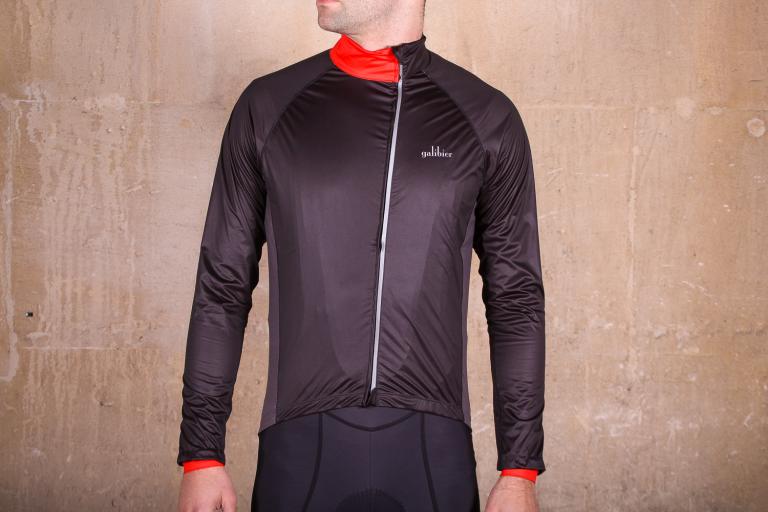The Assos Mille GT Wind Jacket is super compact in your pocket and more closely fitted than most wind/emergency jackets once on.
The key to a good windproof shell is that it can be easily packed away, and this is where the Mille GT Wind excels. It’s feather light at only 90g, and the foil ultra-ripstop fabric is extremely thin, making it pack down to the tiniest parcel.
This doesn’t take away from the protection is offers when out on the bike though, forming a strong barrier against wind on blustery descents. Hunched down in an aero position, there’s no flapping to be heard, looks like Assos put their money where their mouth is when they coined it an 'acoustically innocuous' design.
Along with impressive wind-proofing, a DWR coating does a good job of fending off road spray and drizzle. Elasticated cuffs and a high collar keep out the chill, while the material on side panels make the Mille GT surprising breathable.
Tester Jamie writes: “While Assos Mille GT Wind Jacket is pretty expensive for a windstopper, the performance, usability and quality mean it earns the price tag. You can easily buy cheaper, but they just won't be as good.”























Add new comment
8 comments
Been very satisfied with my Band Of Climbers windproof jacket for a couple of years. Works well in winter with a long sleeve winter jersey to prevent the wind getting through (so keeping the warming air within the insulated part) and aslo in spring or on descents with a lighter jersey. mesh type back helps with not overheating.
Wind chill isn't prevented by wind proof clothing. Wind chill is prevented by insulation.
My wind jacket is ideal for rides where I just want to stop the air blowing through onto the front of me. Keeps the chill out when you're moving.
That's not what wind chill is.
And insulation is the installation of a layer or layers in order to prevent cold air reaching the body, and clearly a material designed to deflect cold winds is going to be the most effective way of doing that. Do you have to be contrarian on every single post?
Didn't ask.
A surface loses heat through conduction, evaporation, convection, and radiation. The rate of convection depends on both the difference in temperature between the surface and the fluid surrounding it and the velocity of that fluid with respect to the surface. As convection from a warm surface heats the air around it, an insulating boundary layer of warm air forms against the surface. Moving air disrupts this boundary layer, or epiclimate, allowing for cooler air to replace the warm air against the surface. The faster the wind speed, the more readily the surface cools.
I mean technically wind chill isn't prevented by insulation either, since it's simply a number, a function of temperature and wind speed. but feel free to think that putting on a windproof jacket doesn't help you stay warmer, if that's your thing.